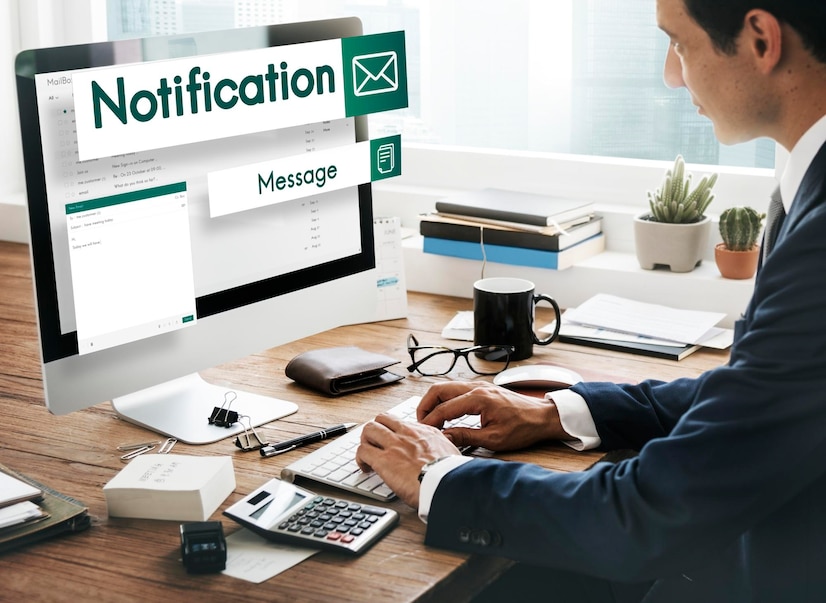Effective communication in business continues to be an essential component of success in today’s fast-paced corporate culture, where techniques of business communication are continually expanding. Email still plays a crucial part in enabling smooth workplace interactions across the numerous channels accessible. Learning the finer points of productive email communication in the office involves more than just sending messages; it also involves sharing information, forming connections, and raising output. This blog examines the methods and methods that can make your email correspondence a potent weapon for success.
Effective Communication in Business: Its Importance
Building relationships, sharing ideas, and communicating goals are all important components of effective corporate communication. Businesses that can communicate well are better positioned to flourish in a time where information flows at lightning speed. Collaboration is facilitated, misunderstandings are avoided, and staff morale is increased by clear and succinct communication. Considering that email is frequently used as a key form of communication in offices, becoming proficient in its subtleties can greatly improve corporate productivity.
Using Email Communication’s Full Potential at Workplace:
Email still stands as a reliable and essential medium for communication despite the abundance of other options. Its adaptability makes it possible to communicate informally as well as formally, enabling smooth communication across hierarchies and time zones. Email provides an organized platform for communicating important information and conveying ideas when it comes to efficient corporate communication.
The Art of Effective Email Communication in the Workplace
Clarity & Brevity: In the corporate world, time is a valuable resource. It is crucial to write emails that are precise, short, and to the point. Make your content simple to skim by using brief sentences, paragraphs, and bullet points. Be considerate of the recipient’s time and make sure the email’s goal is clear from the subject line.
Precision in the subject line: The subject line serves as the doorway to your email. It ought to give a concise summary of the email’s content. By using terms like “urgent,” “action required,” or “meeting request,” you may make the reader aware of how important the message is right away. A compelling subject line can persuade the receiver to open the email right away.
Personalization: Although emails may first come across as impersonal, a little personalization can go a long way. Mention prior interactions with the recipient, address them by name, or mention their accomplishments. Personalization demonstrates your value to the recipient and that you are not just disseminating a canned message.
Structured Format: properly organize your email content. Begin with a warm hello, then move on to the main point, and finish with a kind close. To divide information into easily digestible pieces, use headings, subheadings, and formatting tools. A well-structured email is more likely to be read thoroughly.
Mindful Tone: Tone is very important in email communication. Even if the subject is delicate, always maintain a professional and respectful tone. Avoid using jargon, slang, or emotive language that could be misconstrued. Before hitting the send button, check your email for tone.
Proofreading and Editing: Typos and grammatical errors can impair your communication’s credibility. Take a moment before sending any email to proofread it for errors. Consider reading it aloud to identify any poor phrasing or errors your eyes may have missed.
Examples of Effective Communication in Business
Consider the following scenario to demonstrate the value of excellent email communication in the workplace:
Assume you are a project manager overseeing a team of remote developers. You require an urgent update on the project’s status. Instead of a vague and generic email, you compose one with care and precision:
Subject: Request for Project Status Update – Urgent
Dear [Developer’s Name],
I hope this email finds you well. I wanted to touch base regarding the current status of the [Project Name] that we are diligently working on. As we approach the upcoming milestone, it would be immensely helpful to have a clear understanding of the progress.
Could you please provide a brief update on the following points:
– Overall completion percentage
– Key achievements since the last update
– Any roadblocks or challenges hindering progress
– Expected timeline for the next phase
Your insights will greatly contribute to aligning our efforts and ensuring a successful outcome. If possible, let’s schedule a quick call to discuss any intricacies further.
Thank you for your dedication and hard work. Looking forward to your prompt response.
Best regards,
[Your Name]
The email in this example has a clear aim, and detailed directions, and is written in a courteous tone. It recognizes the recipient’s efforts and provides a solution-focused approach.
Conclusion
In the workplace, effective email communication is a talent that can have a big impact on professional relationships and corporate outcomes. You can transform your emails into strong instruments for expressing information, promoting cooperation, and attaining outcomes by mastering the tactics of clarity, customization, organized layout, and tone. Remember that every email you send is an opportunity to demonstrate your professionalism and dedication to successful business communication.












